Mastering Egg Dyeing: Techniques and Creative Ideas
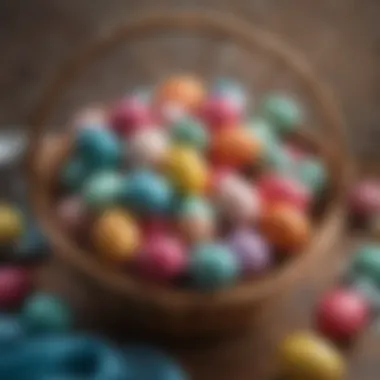

Intro
Egg dyeing has long been a cherished tradition, particularly during festive seasons and holidays. This activity offers not just a fun way to express creativity, but also an opportunity to engage with family and friends. In today's guide, we delve into various techniques for dyeing eggs, ensuring that readers of all skill levels can produce beautiful results. Whether you are preparing for Easter or simply want to add color to your culinary projects, understanding the essentials of egg dyeing will elevate your decorative capabilities.
Through this exploration, we will highlight the key points, from selecting the right materials to learning the techniques that yield vibrant colors. By following our detailed instructions, you will find yourself well-equipped to create colorful masterpieces that impress.
Recipe Highlight
Before diving into the instructions, let’s highlight a classic and appealing recipe for dyeing eggs that stands out among others: Natural Dyeing with Vegetables. This technique not only yields striking colors but also uses materials that are easy to find in your kitchen or garden.
Essential Ingredients:
- White eggs
- Red cabbage (for blue and purple hues)
- Onion skins (for rich browns and reds)
- Beets (for pinks)
- Turmeric (for yellow)
- Vinegar
- Water
Estimated Time to Prepare:
Approximately 2 hours, which includes preparation and dyeing time.
Servings:
This technique yields dozens of beautifully dyed eggs, depending on the number you choose to dye.
Step-by-Step Instructions
- Prepare the Eggs: Start with clean white eggs. You can use brown eggs, but the colors may appear differently.
- Create the Dye:
- Add Vinegar: Once the color is extracted and strained, add 1 tablespoon of vinegar to the dye bath to help set the color.
- Dye the Eggs: Place the eggs in the dye. Let them soak for 10-30 minutes depending on the desired intensity.
- Drying: Carefully remove them and place them on a drying rack.
- For red cabbage, chop the cabbage into pieces and simmer in water for around 30 minutes.
- For onion skins, gather the skins and boil them in water for similar time.
- For beets, peel and chop, then simmer as well.
- For turmeric, mix powder with water directly.
Insider Advice:
It’s essential to experiment with time to find the perfect color. Eggs can also be left in the dye overnight for more intense hues. Avoid cracking the eggs while cooking, as this can lead to unsightly spots.
Variations and Substitutions
If you're looking to customize your egg dyeing experience, consider:
- Using other vegetables or spices like spinach for green or coffee for dark brown.
- Adding essential oils for an aromatic touch.
- Combining different dyes for marbled effects.
Different ways to enjoy decorated eggs include using them in salads or as decorative pieces in your home.
Time-Saving Cooking Tips
To maximize efficiency in your egg-dyeing process, consider these strategies:
- Prep multi-colored dye baths simultaneously to allow for more variety when dyeing.
- Use jars or containers that allow an efficient soak.
- Clean and dry eggs in advance, maintaining a designated space for coloring.
Recommended Tools:
- Old cooking pots for boiling dyes.
- Strainers to separate vegetable materials from dye.
- Wire racks for drying the eggs without touching.
Nutritional Information
While these eggs are primarily meant for decorative purposes, here is some basic nutritional information:
- Each egg contains about 70 calories, with proteins, vitamins A, D, and other nutrients.
Eggs fit into various dietary plans, making this activity not only creative but also nutritionally beneficial. They can be a source of protein in a balanced diet, whether served alone or in various dishes.
"Dyeing eggs is not just a craft; it’s a celebration of colors and creativity that nourishes both body and spirit."
By following this comprehensive guide, you will enhance both your skills and your celebrations with beautifully dyed eggs.
Prologue to Egg Dying
Egg dying is more than just a delightful craft; it embodies rich traditions and creative expression. This practice transcends mere aesthetics. With origins in various cultures and historical periods, it plays a significant role in numerous celebrations, particularly Easter. Engaging in this activity enables individuals to connect with heritage while fostering creativity. The skills learned through egg dying can also translate into numerous decorating techniques in culinary arts.
Through this guide, we aim to underscore the key practices involved in egg dying. Readers will gain insight into essential materials and colors used, and the various methods available for dyeing eggs. This knowledge is crucial for achieving vibrant and long-lasting results. Moreover, we will explore innovative designs, ensuring that enthusiasts of all skill levels can enhance their creations. Understanding the nuances of egg dying will allow food lovers and crafters alike to create unique, personalized works of art.
Historical Context
The history of egg dying dates back thousands of years. Various cultures have embraced the egg as a symbol of rebirth and new life. For instance, ancient Egyptians colored eggs to signify the arrival of spring. Similarly, in Eastern Europe, the tradition persists, with intricate designs adorning the eggs to mark significant holidays. The practice evolved through the years, adapting to various cultural influences.
In medieval Europe, the custom of dyeing and decorating eggs was closely linked with Christian beliefs. Eggs were often dyed using natural dyes, created from plants, fruits, and minerals. These carefully crafted eggs would later be exchanged among family members and friends, reflecting joy and renewal during Easter festivities.
Cultural Significance
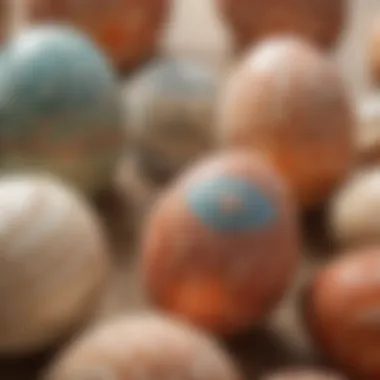
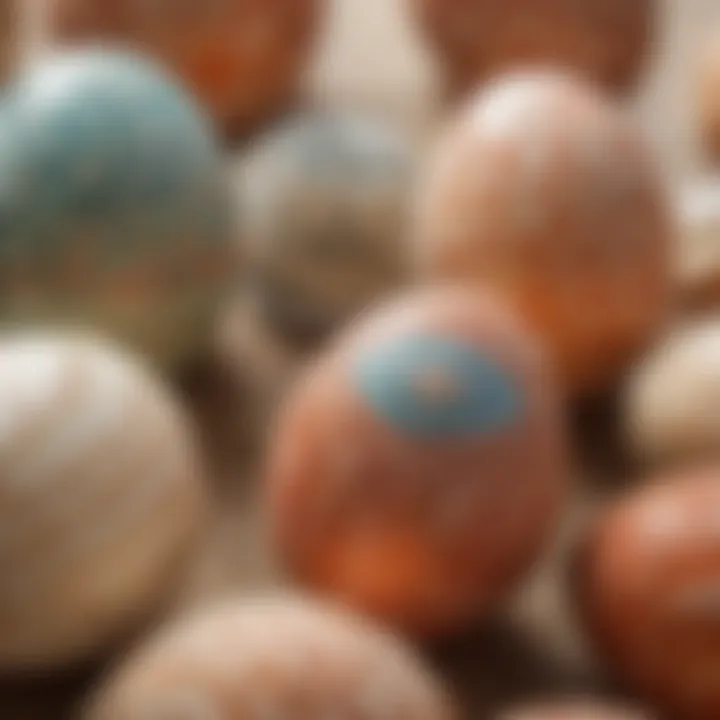
Throughout history, the cultural implications of egg dyeing extend far beyond seasonal celebrations. In many societies, traditionally dyed eggs herald new beginnings, luck, and fertility. The act of dyeing eggs serves as an opportunity for community bonding and family gatherings. In places like Poland and Ukraine, the crafting of decorated eggs is a skilled art form, with local artists employing unique techniques passed down through generations.
Moreover, the colors and patterns used often hold symbolic meanings. In various cultures, certain shades may represent love, health, or prosperity. This imbues the act of egg decorating with emotional depth, turning simple eggs into treasured objects of cultural significance. The continuity of these traditions speaks to the human desire to connect through shared customs and values.
Essential Materials for Egg Dying
Understanding the essential materials for egg dying lays the groundwork for successfully engaging in this delightful and creative activity. A well-prepared workspace stocked with appropriate items can significantly enhance the dyeing experience, yielding vibrant and aesthetically pleasing results. This section covers common dyes and alternatives as well as the tools and utensils required to transform ordinary eggs into colorful masterpieces.
Common Dyes and Alternatives
The choice of dye can profoundly impact the final appearance of the eggs. Various dyes are available, each offering distinct colors and properties. Here are several common options:
- Commercial Dyes: These dyes are often available in kits, providing a user-friendly experience. They are formulated for ease of use and consistency in results. Brands like Wilton and PAAS come with instructions tailored for all skill levels.
- Natural Dyes: For those who prefer an eco-friendly approach, natural dyes from foods can be used. Common sources include:
- Red cabbage for blue shades
- Turmeric for vibrant yellow
- Beets for pink or red hues
- Onion skins for rustic orange and brown colors
Using natural dyes may require additional steps and experimentation but can yield unique shades that are not achievable with commercial options.
It's also crucial to consider the type of eggs being dyed. White eggs absorb color better compared to brown eggs, leading to more vivid results. Consequently, selecting the right dye and egg type is vital for achieving the desired effect in your creations.
"The choice between natural and commercial dyes ultimately depends on your preferences and the look you want for your eggs."
Tools and Utensils Required
Equipping your dyeing station with the right tools can simplify the egg dyeing process. Here is a list of essential tools and utensils:
- Gloves: Wearing gloves protects your hands from stains and maintains cleanliness.
- Containers: Shallow bowls or cups work well for mixing dyes. Ensure they are non-absorbent to prevent damage.
- Spoons or Tongs: These are useful for handling eggs safely while preventing any unwanted breakage.
- Wire Racks: A wire rack or drying tray allows for proper drying after dyeing, preventing the eggs from rolling around.
- Paper Towels: Handy for cleaning up spills and drying dye-covered eggs.
Additionally, consider having a drop cloth or old newspaper covering the work surface to catch possible spills. A thorough and organized preparation ensures that the dyeing process is enjoyable and less stressful.
Engaging in egg dyeing does not merely yield colorful eggs; it fosters creativity and provides an opportunity for individuals to explore artistry in a playful manner.
Preparation Steps
The preparation steps are a foundational aspect of the egg dying process. Taking the time to select the right eggs and ensure they are clean sets the stage for successful dyeing. Each step involves simple yet critical tasks. They help enhance the quality of the final outcome, ensuring vibrant colors and designs. By focusing on preparation, enthusiasts can prevent common issues that often arise from being careless. Some important benefits include ensuring better dye adhesion and a smoother creative process.
Selecting the Eggs
Choosing the right eggs is vital. Freshness influences not only the quality of the dyeing process but also the final appearance of the eggs. Generally, it is best to go for white eggs. White eggs provide a brighter canvas that allows colors to pop. However, natural dyes can produce interesting results on brown eggs too. When selecting, check for:
- Cracks or blemishes: These can affect dyeing and aesthetic.
- Size: Choose eggs that are uniform in size for an even dyeing result.
- Freshness: Use eggs that are as fresh as possible. They hold dye better and yield less risk of breakage.
In some cultures, specific colors or types of eggs may have particular meanings. It can be interesting to research local traditions. This adds value to the selection process.
Cleaning the Eggs
Cleaning eggs before dyeing is an essential step that should not be overlooked. Dirt or oil residues can interfere with dye absorption. If the surface is not clean, the dye may not adhere as expected. To clean the eggs:
- Rinse under cool water: Gently rub them with your hands to remove loose dirt.
- Use a mild detergent: For eggs that are stubbornly dirty, using a small amount of dish soap can help. Be sure to rinse well afterward.
- Disinfect (optional): Some prefer to use a vinegar-water solution to thoroughly clean and disinfect the shells.
After cleaning, dry the eggs completely. Use a soft cloth or paper towel to ensure that no moisture remains. This step is key to achieving a beautiful finish.
"Proper preparation is crucial for achieving vibrant results in egg dyeing. Take the time to prepare, and the outcomes will be more rewarding."
Traditional Egg Dying Techniques
Egg dyeing is a celebrated tradition that transcends mere aesthetics. In this section, we will explore the foundational techniques used throughout history to color eggs, highlighting methods that are both time-honored and popular today. These traditional egg dying techniques serve not only to beautify eggs but also connect people to cultural practices, instill a sense of creativity, and create lasting memories during celebrations.
Boiling with Natural Dyes
Boiling eggs with natural dyes is a method deeply rooted in various cultures, often using ingredients that are easily found in the kitchen or garden. This technique is not only environmentally friendly but allows for a sensory experience that engages smell and sight. Ingredients like red cabbage, beets, onion skins, and turmeric can produce stunning colors without using synthetic chemicals.
When using natural dyes, the procedure is simple. First, prepare the dye by boiling the chosen plant material in water. The ratio of dye material to water typically varies, usually aiming for colored water indicates strong dye potential. The longer you boil, the more vibrant the color can become. After straining out the solids, allow the dye to cool before adding the eggs.
Here are some popular natural dyes:
- Red Cabbage: Produces a blue to purple hue, depending on the pH of the water.
- Beets: Create a rich pink color.
- Onion Skins: Range from golden yellow to deep orange.
- Turmeric: Yields a bright yellow-orange shade.
This traditional method emphasizes the beauty of nature, and it is a rewarding experience as each batch of eggs will yield different results based on the materials used and their concentration. The process cultivates patience and appreciation for the nuances in color, making it ideal for those who value natural elements in their crafts.
Using Commercial Dyes
On the other hand, using commercial dyes has become increasingly popular for those seeking consistent results and a broader range of colors. These dyes often come in kits that include everything needed for a successful dyeing experience. Typically, the process involves mixing the dye powder with water and vinegar, creating a vibrant solution.
Commercial dyes offer several advantages:
- Simplicity: The process often includes clear instructions, making it accessible for beginners.
- Variety: A wide selection of colors is available, ensuring that decorators can find the perfect shades.
- Speed: The dyeing process tends to be quicker than using natural dyes, allowing for a faster transformation of plain eggs into colorful works of art.


To use commercial dyes effectively, follow these steps:
- Prepare the dye solution as per the instructions, mixing in the proper ratios of water and vinegar.
- Submerge the cleaned eggs in the dye, ensuring full coverage for an even application.
- Allow the eggs to sit for varying durations, depending on the desired intensity of color.
- Rinse eggs gently and let them dry on a wire rack.
While commercial dyes streamline the egg dyeing process, it is essential to choose quality products that are safe. Always check for certifications, especially if the eggs are to be consumed. Thus, combining both traditional and commercial techniques can enhance the egg-dyeing experience, appealing to a wider range of preferences and occasions.
Remember: The journey through egg dyeing is as valuable as the final product – it invites exploration and creativity.
In summary, the exploration of traditional egg dyeing techniques reveals deep cultural connections and modern innovations. Both natural and commercial methods have unique benefits, providing various options to produce beautiful dyed eggs suitable for gifting, celebration, or personal enjoyment.
Creative Dyeing Methods
Creative dyeing methods are crucial for adding a personal touch to the egg dyeing experience. These techniques allow individuals to experiment with colors, textures, and patterns, transforming simple eggs into unique decorative items. The creative aspect of dyeing can motivate people to participate in family activities, celebrations, or cultural rituals, enriching the overall experience.
Tie-Dye Techniques
Tie-dye is a popular method known for its vibrant and spiraling patterns. This technique involves folding or tying the eggs in specific ways before applying dyes. The rubber bands or strings create resist areas, allowing users to experiment with multiple colors simultaneously. Here are the steps to achieve tie-dye effects:
- Gather Materials: You will need colored dyes, rubber bands, and gloves to prevent staining.
- Prepare the Eggs: Start with boiled and cooled eggs. Ensure they are clean and dry.
- Tie the Eggs: Wrap rubber bands around the eggs in various directions. The tighter the band, the more defined the design will be.
- Apply Dyes: Using droppers or brushes, apply different colors to the exposed areas. Allow some colors to blend for unique effects.
- Let Them Dry: Once dyed, place eggs in egg cartons to dry completely.
This technique offers versatility, as you can create intricate designs or simple colorful patterns with little effort.
Sponge Painting
Sponge painting is another creative technique suitable for those who prefer a less precise method. It involves using sponges to dab color onto eggs, resulting in a speckled and textured finish. This method is especially appealing for children, as it allows for fun and easy application. The steps to sponge painting include:
- Prepare Dyes: Mix dyes in shallow containers or plates.
- Cut Sponges: Divide sponges into smaller pieces for easy handling.
- Dab and Apply: Dip a sponge into the dye and press it gently onto the egg's surface. Use different sponges for each color.
- Layer Colors: For a multidimensional effect, let one layer dry before applying another.
- Drying Process: Allow the eggs to dry without touching other surfaces.
This method is particularly forgiving since mistakes can easily blend into artistic patterns.
Silk Tie Method
The silk tie method is a more sophisticated approach to egg dyeing, yielding stunning results. This technique uses the fabric from silk ties to transfer their dye patterns onto eggs during boiling. Here’s how to do it:
- Obtain Silk Ties: Look for old or inexpensive silk ties. Natural silk works best due to its dye quality.
- Prepare the Egg: Wrap boiled eggs tightly with pieces of silk, ensuring the design is in contact with the shell.
- Use a Cotton Cloth: Cover the silk-wrapped eggs with a cotton cloth to protect them during boiling.
- Boil the Eggs: Place the wrapped eggs in water with a bit of vinegar, and then boil for about 20-30 minutes.
- Reveal the Designs: Allow the eggs to cool and unwrap to see the transfer of beautiful patterns.
This method not only produces colorful eggs but also showcases intricate designs that are impossible to achieve with regular dye methods.
Post-Dyeing Considerations
After successfully completing the egg dying process, it is essential to focus on the post-dyeing considerations. This phase is critical for ensuring that your beautifully dyed eggs remain vibrant and intact. Proper attention to drying and storage significantly influences the longevity and appearance of the dyed eggs. Following the right steps can enhance both aesthetic appeal and safety, especially if the eggs are to be displayed or consumed.
Drying the Eggs
Drying is a crucial step that should not be overlooked. After the eggs have been dyed, they need adequate time to dry completely. Placing wet eggs on a paper towel can lead to moisture gathering, which may affect the dye quality. To avoid anything like that, opt for an egg carton or a wire rack.
- Remove Excess Dye: Gently shake off any excess dye before placing the eggs to dry.
- Use an Egg Carton: An egg carton allows eggs to rest safely without rolling. This positioning helps maintain the integrity of the design.
- Airflow: Ensure that air can circulate around the eggs to avoid any dampness that can cause color fading.
- Time Required: Typically, allowing the eggs to dry for at least one hour is sufficient, but checking for full dryness before handling is advisable.
Storage Options
Once the eggs are completely dry, selecting the right storage method is vital for preservation. Proper storage not only keeps the eggs safe but also maintains the effect of the dye over time. Here are effective strategies for active storage:
- Refrigeration: If you used food-safe dyes and plan to consume the eggs, store them in the refrigerator. An airtight container will help prevent any odor absorption and maintain freshness.
- Display Containers: For decorative purposes, consider using display cases. These can protect the eggs from breakage and dust.
- Avoid Direct Sunlight: Exposure to direct sunlight can fade the colors. Store your eggs in a cool, dark place or in a display area that minimizes sun exposure.
- Labels: If you dyed eggs with different techniques or colors, labeling them can help remember the method used when retrieving them later.
Proper drying and storing can significantly increase the longevity of your dyed eggs and ensure they remain a joyful centerpiece during any festivities.
By paying careful attention to these post-dyeing considerations, you can ensure that your work retains its vibrancy and charm. Whether the eggs serve as a centerpiece for a gathering or as part of the holiday decor, proper management will allow them to shine.
Displaying Your Dyes
Displaying dyed eggs is more than a mere afterthought; it is an essential element of the entire egg dying experience. After investing time and creativity into crafting visually appealing designs, the way these eggs are showcased is crucial. It allows creators to appreciate their work fully. Furthermore, proper display can enhance the overall ambiance of festive occasions.
When it comes to displaying dyed eggs, one should consider the aesthetic appeal, durability, and purpose of the setup. A thoughtful approach can elevate ordinary egg decorating into a memorable thematic experience. There are several ways to effectively present these creations, allowing for both functionality and visual delight.
Creative Display Ideas
Here are some ideas for creatively displaying your dyed eggs:
- Egg Stands: Using small egg holders can present each egg prominently. These can range from simple wooden ones to ornate glass designs, matching your decor style.
- Glass Jars or Vases: Arrange the eggs in clear jars. This allows for a colorful view from all angles. You may incorporate some decorative filler to add depth.
- Easter Baskets: Utilize traditional baskets filled with straw or grass. This gives a classic feel, perfect for spring celebrations.
- Tiered Stands: Consider using multi-level cake stands to showcase multiple eggs at once. This adds a vertical dimension to your display, making it eye-catching.
- Wall Displays: Create a unique art piece by hanging dyed eggs from a branch or twine, resembling a mobile. This can bring a whimsical touch to your decor.
Choose a display method that emphasizes the colors and patterns of the dyed eggs while maintaining a cohesive look with the overall decor.
Incorporating Eggs into Festive Decor
Incorporating decorated eggs into festive decor can transform a simple space into a celebration. Whether it is for Easter, a spring gathering, or another event, the use of dyed eggs can enhance the visual landscape.
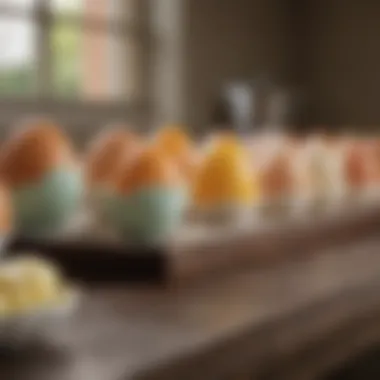
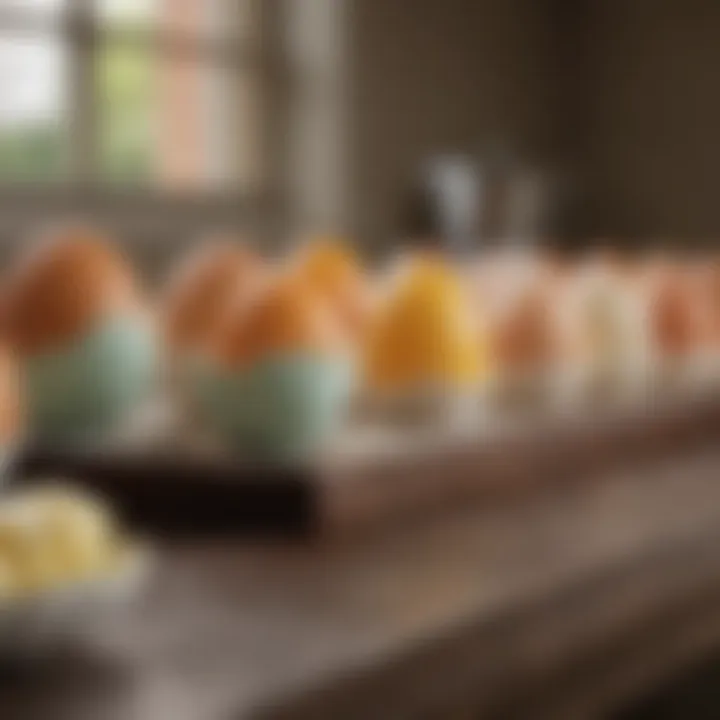
- Table Centerpieces: Place a cluster of dyed eggs in the center of your dining table. Surround them with candles or flowers for added charm. This draws attention and creates a welcoming atmosphere.
- Door Wreaths: Attach dyed eggs to a wreath made of natural materials, integrating color and texture at your entryway. This serves as an inviting touch for guests.
- Place Settings: Use individual dyed eggs at each place setting. Personalizing each guest's experience can make them feel special, creating a lasting impression.
- Banners or Garland: String together smaller dyed eggs to create a festive banner. Hang it across a mantel or along a wall to add a playful vibe.
"Displaying your dyed eggs thoughtfully can lead to an enhanced experience, making each effort in the dyeing process worthwhile."
Troubleshooting Common Issues
Dyeing eggs can be an enjoyable and creative process; however, bumps along the road sometimes arise. Recognizing and resolving common problems enhances the overall experience. Understanding the nuances of egg dyeing can lead to more vibrant and long-lasting results. This section is dedicated to troubleshooting, helping you identify and address issues efficiently.
Avoiding Color Fading
One frequent issue with dyed eggs is color fading, which can occur due to various factors. To tackle this problem, consider the following points:
- Choose Quality Dyes: Always opt for high-quality dyes, whether natural or commercial. Poor-quality products often yield muted and less vibrant colors.
- Application Method Matters: Ensure that you apply the dye evenly. Uneven application can lead to inconsistent results, making some areas prone to fading.
- Proper Drying Techniques: After dyeing, eggs should be properly dried. Air drying can sometimes allow dyes to fade. Instead, consider using a paper towel to gently dab away excess dye before completely drying them.
- Avoid Sunlight Exposure: Store your dyed eggs away from direct sunlight. UV rays can break down color molecules, resulting in fading over time.
With attention to these aspects, achieving lasting vibrancy becomes more feasible.
Addressing Staining Problems
Staining can be another common challenge when dyeing eggs. This usually happens when the dye is overly saturated or the surface of the egg has not been prepared properly. Here are some steps to consider for addressing staining issues:
- Surface Preparation: Always clean your eggs thoroughly and avoid any initial oil or residue. This ensures even adhesion of the dye, reducing the chance of uneven staining.
- Controlled Dipping: If using a liquid dye bath, dip the eggs cautiously. Quick dips help prevent overstaining, which in turn minimizes the risk of excess dye settling in spots, causing unwanted stains.
- Rinse Properly: After dyeing, rinse dyed eggs under cold water. This can help remove excess dye that may lead to unwanted stains or discoloration.
- Utilizing White Vinegar: A quick dip in a white vinegar solution after dyeing can help set the color. This helps secure the dye and reduce staining on surfaces post-dyeing.
By addressing these common challenges, the egg dyeing process can become smoother and more rewarding.
"A little care in the troubleshooting stage can make a significant difference in your final product."
Enhancing your egg dyeing skills through recognizing and resolving common issues paves the way for beautiful and memorable creations.
Sustainability and Environmental Impact
Sustainability in the context of egg dying is becoming increasingly significant. As awareness of environmental issues rises, many people are looking for ways to incorporate sustainable practices into their hobbies and celebrations. Egg dying, while seemingly harmless, can have implications for the environment based on the materials used and the methods employed.
When choosing dyes, opting for eco-friendly options is vital. Many commercial dyes contain synthetic chemicals that can harm water systems if disposed of improperly. Utilizing natural dyes made from fruits, vegetables, and other organic materials not only reduces the potential environmental impact but also offers a unique range of colors and textures that enhance the creative experience of egg dying.
Another important aspect is responsibly managing the waste generated during the dyeing process. Many people overlook how their disposal practices can affect their communities and the environment. By being mindful about disposal, individuals can minimize their carbon footprints while fully enjoying this festive art.
"Choosing sustainable egg dying methods can enhance creativity while protecting the planet."
Choosing Eco-Friendly Dyes
Opting for eco-friendly dyes is a critical step in the egg dying process. Natural dyes are often derived from readily available resources, such as fruits, vegetables, and spices. For example, beet juice provides a vibrant pink hue, while turmeric can yield a rich yellow. These options not only produce beautiful results but also contribute to a more sustainable practice since they avoid synthetic ingredients.
Many people prefer these natural alternatives because of their lower toxicity levels. Besides being safer for the environment, they are also gentler on the skin and the air we breathe. The process of creating dyes from natural substances often involves simpler steps, which can be an engaging and educational experience.
Here are some natural dye sources to consider:
- Red cabbage: Produces shades of blue and purple.
- Coffee or tea: Offers earthy brown tones.
- Onion skins: Deep yellow or orange results can be had from this kitchen waste.
Choosing eco-friendly dyes not only satisfies the desire for vibrant colors but also allows individuals to connect more deeply with the materials used in their craft.
Disposing of Materials Responsibly
Proper disposal of dye materials is essential for minimizing environmental harm. Many crafting practices generate waste, and responsible disposal ensures these materials do not enter the ecosystem adversely.
For leftover dyes, a practical approach is to compost any plant-based materials. This practice recycles nutrients back into the soil, which benefits future growth and reduces landfill waste.
When it comes to disposal of synthetic dyes, it's important to consult local waste management guidelines. Some areas have specific instructions for disposing of chemicals that may otherwise contaminate water tables or harm wildlife.
Here are some responsible disposal practices:
- Composting: Suitable for natural dyes and organic scraps.
- Disposing: Follow local regulations for synthetic chemicals.
- Container recycling: Clean and recycle any plastic containers used during the process.
By understanding the full cycle of egg dying, from the materials selected to how they are disposed, individuals can participate in a crafting activity that is mindful of both creativity and the environment.
Final Thoughts
In closing, the art of egg dying is a rich blend of tradition, creativity, and personal expression. Engaging in this activity not only allows individuals to explore vibrant colors and intricate designs but also serves as a means to connect with cultural practices throughout history. Whether you are a seasoned dyer or a curious beginner, the insights provided can enhance your experience and output.
Egg dying is more than just a process; it represents a celebration of life and creativity, resonating with various festivities across different cultures. It encourages individuals to reflect on their choices of materials, methods, and designs, fostering a deep appreciation for this age-old craft.
Reflection on the Egg Dying Experience
Taking time to reflect on your egg dying experience is crucial. This practice allows you to consider the personal significance of the activity. Each dyed egg comes with its story, whether it aligns with holiday traditions, family gatherings, or personal milestones. The pride one feels upon creating uniquely colored eggs can enhance the activity’s meaningfulness.
Moreover, the process often involves collaboration with others, be it family members or friends. Sharing ideas and techniques not only makes the experience enjoyable but also forges bonds through a shared goal. In creating together, you contribute to a collective memory that extends beyond the act of dyeing itself.
Encouragement to Experiment Further
As you conclude your initial egg dyeing journey, it’s vital to encourage further experimentation. The world of egg dying is vast, with a myriad of techniques and color combinations waiting to be explored. Do not hesitate to step outside traditional methods; try unusual colors, patterns, or even mixed media approaches.
Innovating beyond established practices can lead to personal breakthroughs in creativity. Attend workshops, browse through online platforms such as Reddit for inspiration, or even initiate your own projects. Resources such as Wikipedia or Britannica can provide insights into historical and cultural aspects that might inspire your next creation.
Experimentation is key to not only improving your technique but also discovering what resonates with you. By continuing to embrace the artistry of egg dying, you can develop your signature style, fostering a deeper connection to this beautiful craft.







